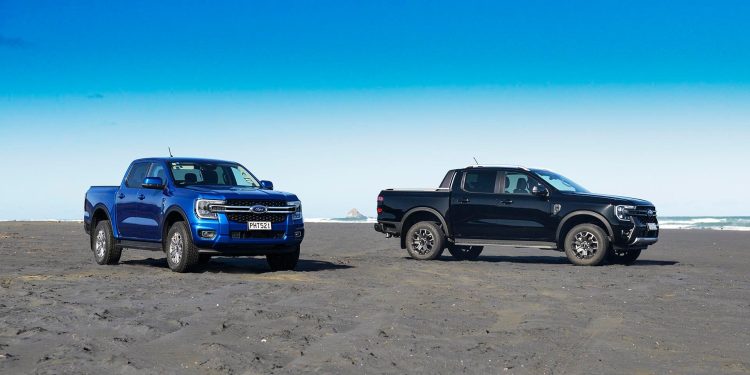2022 Ford Ranger Wildtrak V6 vs Ford Ranger XLT 4×4 comparison review
Words: Kyle Cassidy | Photos: Alex Schultz/Harrison Wade
Ford’s all-new Ranger line-up has arrived. We test the backbone of the range, the bi-turbo XLT and the fat cat Wildtrak, packing the new 3.0 V6.
Ranger has been a real success for Ford here, top of the pops in recent years, and the all-new version has been much anticipated by the faithful. So much so that Ford NZ already had 5000 keen customers signed up prior to its release. Given the pent-up demand, some models have a decent wait time; a new order for a V6 Wildtrak won’t be filled until February next year. The Clean Car Discount fee hasn’t perturbed buyers either, with more than half of those orders being for the new V6 diesel variants. Those waiting for their new Ranger should be suitably impressed when they finally get it. While the previous model was a good truck, this new one steps up in all the key areas.
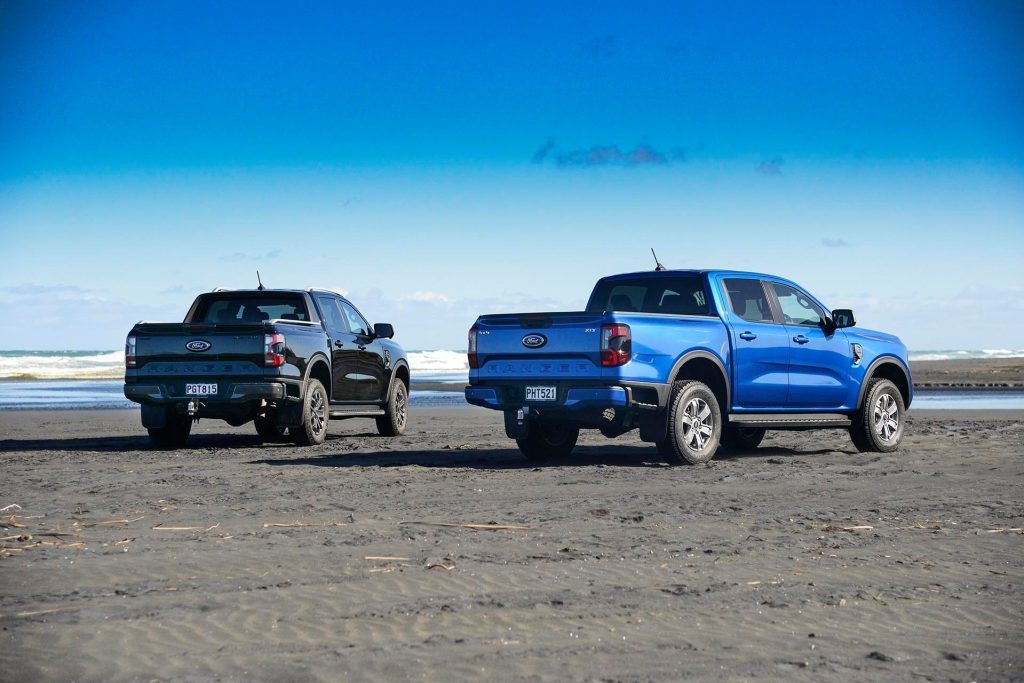
According to Ford, the thing existing owners wanted most from their new Ranger was more power, so cue the 3.0-litre V6 with 184kW and 600Nm, all on from 1750-2250rpm. This is much smoother than the gruff old five-pot, and although it lacks that unique sound of the 3.2, still emits a powerful tone.
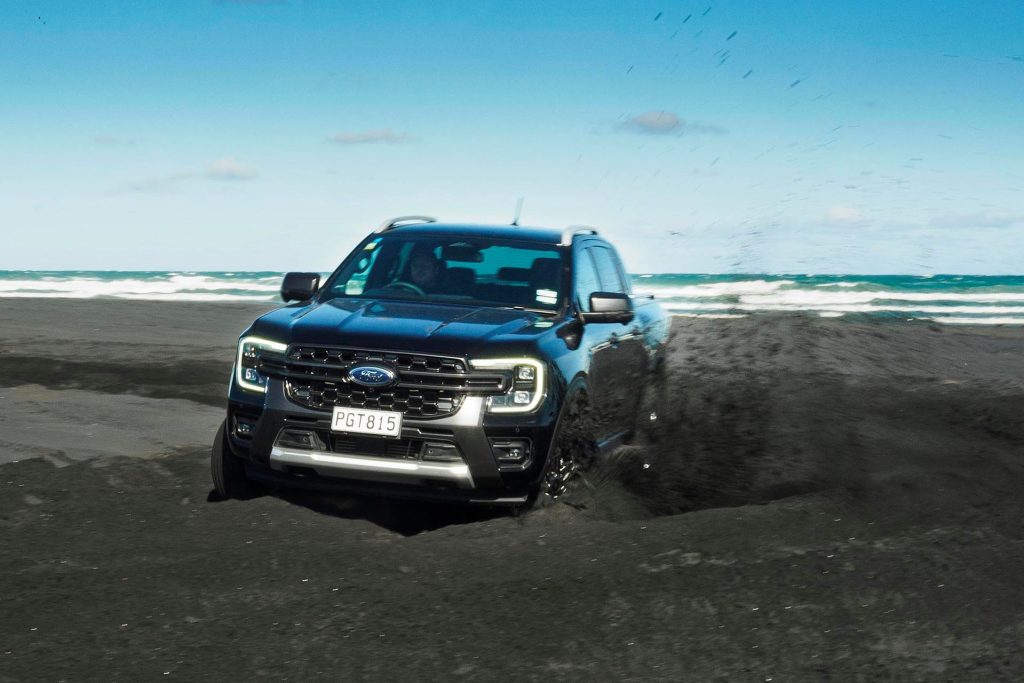
The V6 motivates the Sport and Wildtrak variants although the latter can also be had with the revised 2.0-litre bi-turbodiesel, which is standard for the XLT. The fleet-spec XL is only available with the 130kW/405Nm 2.0-litre single turbo engine and a six-speed auto.
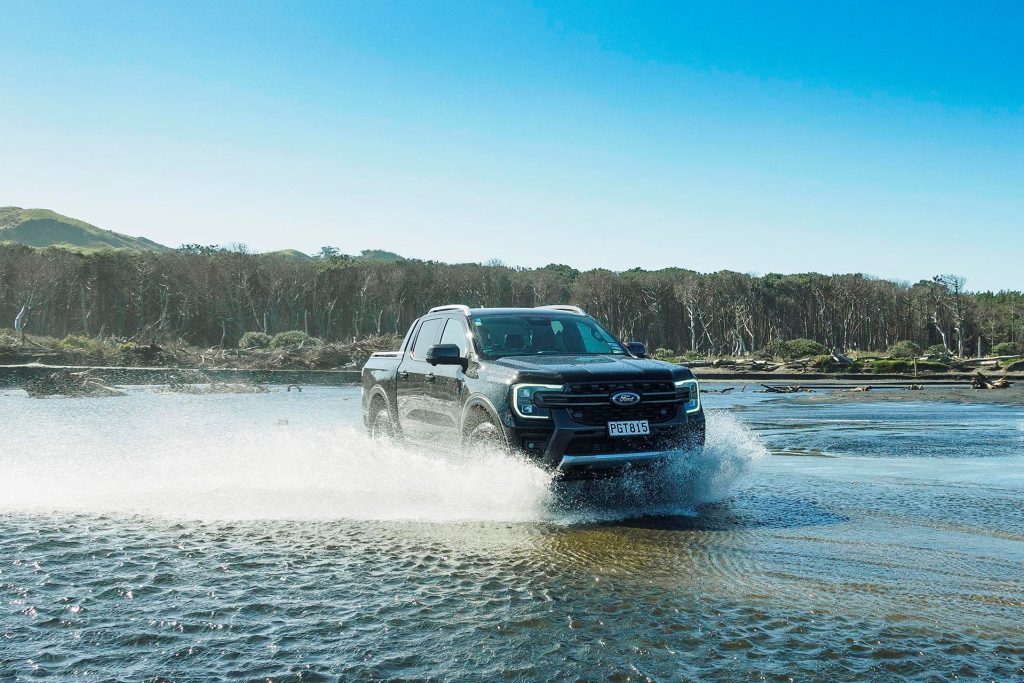
The bi-turbo has been revised primarily for refinement and economy, and it’s hardly lacking in pull with 500Nm from 1750-2000rpm to go with the 154kW. XLT buyers shouldn’t feel hard done by with this engine. General refinement levels benefit from the lack of diesel clatter, though the V6 is certainly quieter and more refined. The bi-turbo also has an odd vibe about it when you’re travelling at 80km/h in top; it just isn’t in a happy place. But otherwise, it’s a likeable engine, with little in the way of lag away from a standstill. It’s a decent revver too, though much kudos needs to go to the 10-speed auto. This shifts impeccably for a truck trans, though it does like to skip through the gears to eke out economy. It can therefore occasionally get caught out if you ask for extra speed when going for a gap. There’s a moment’s hesitation before it kick downs to sort the need.
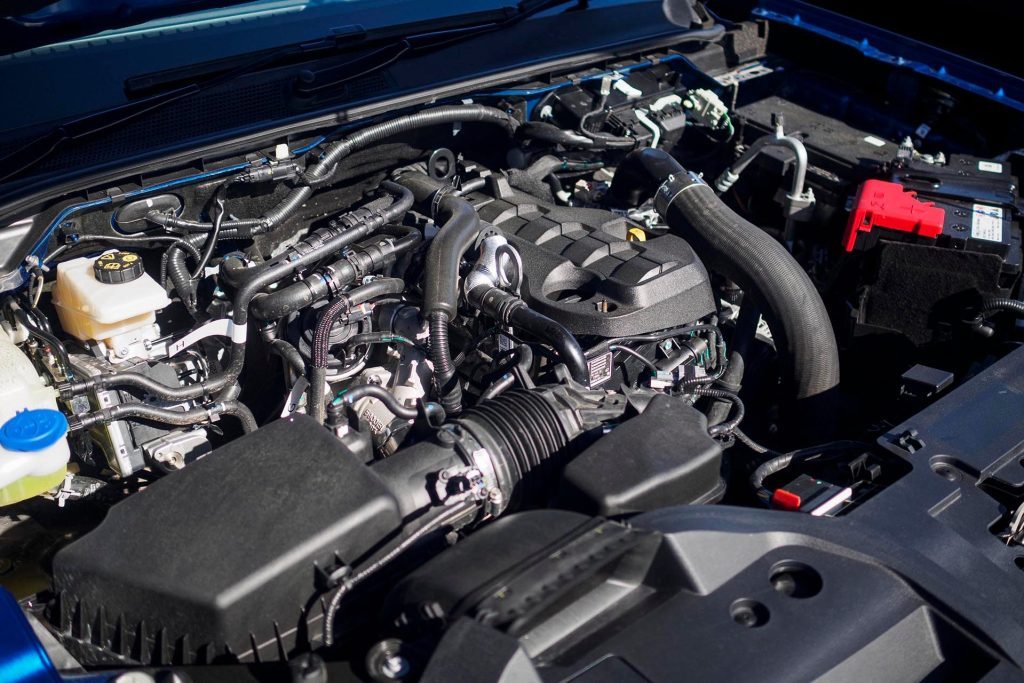
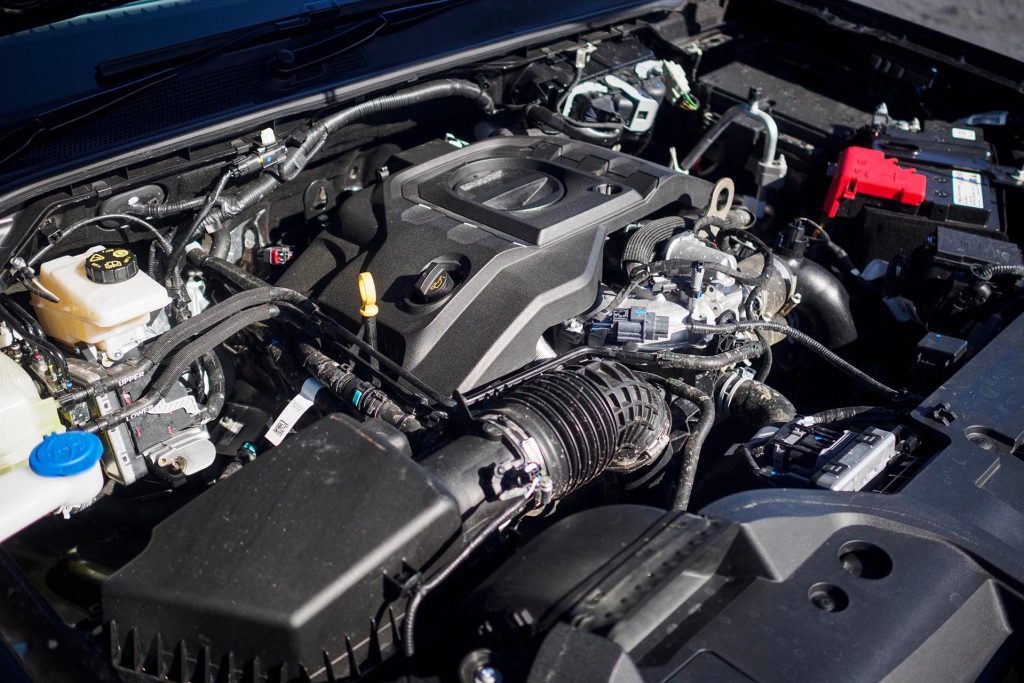
The V6, with its extra capacity and torque, rarely feels lacking for grunt, pulling taller gears more easily. It’s the big lazy donk for lovers of excess. There’s simply a heap of torque, delivered right down low.
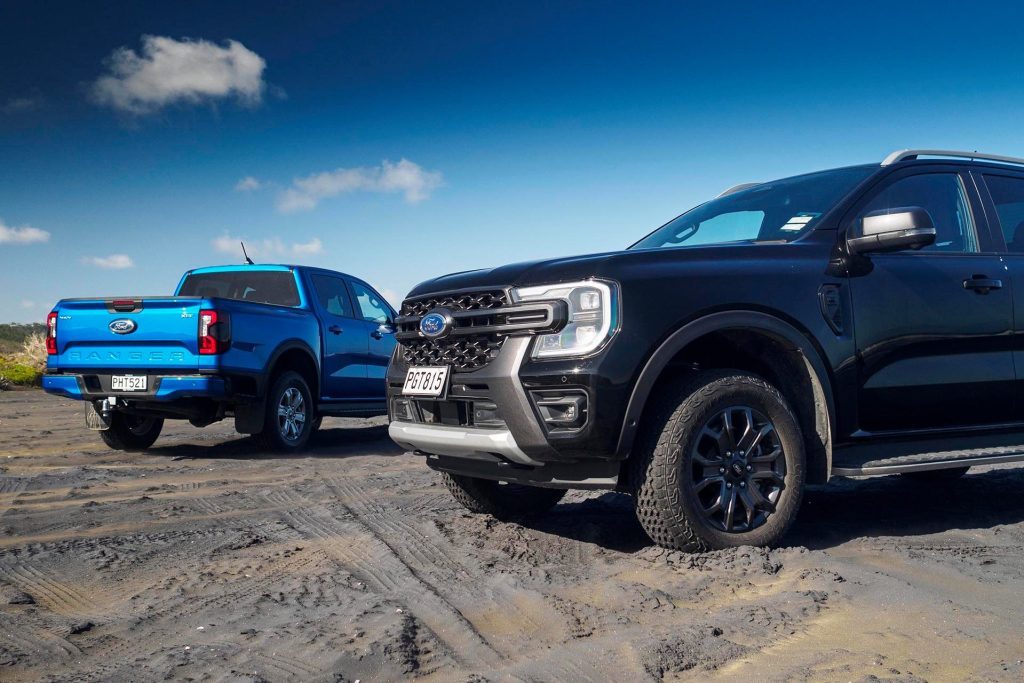
The V6 is not quite a second quicker over both the 0-100km/h sprint and the 80-120km/h overtake, so there’s not much to brag about there. But then it’s not much thirster either, pegged at 9.6L/100km (WLTP3 figure) to the bi-turbo’s 8.3L/100km. We registered just over 10L/100km in the XLT and 11.5 in the Wildtrak.
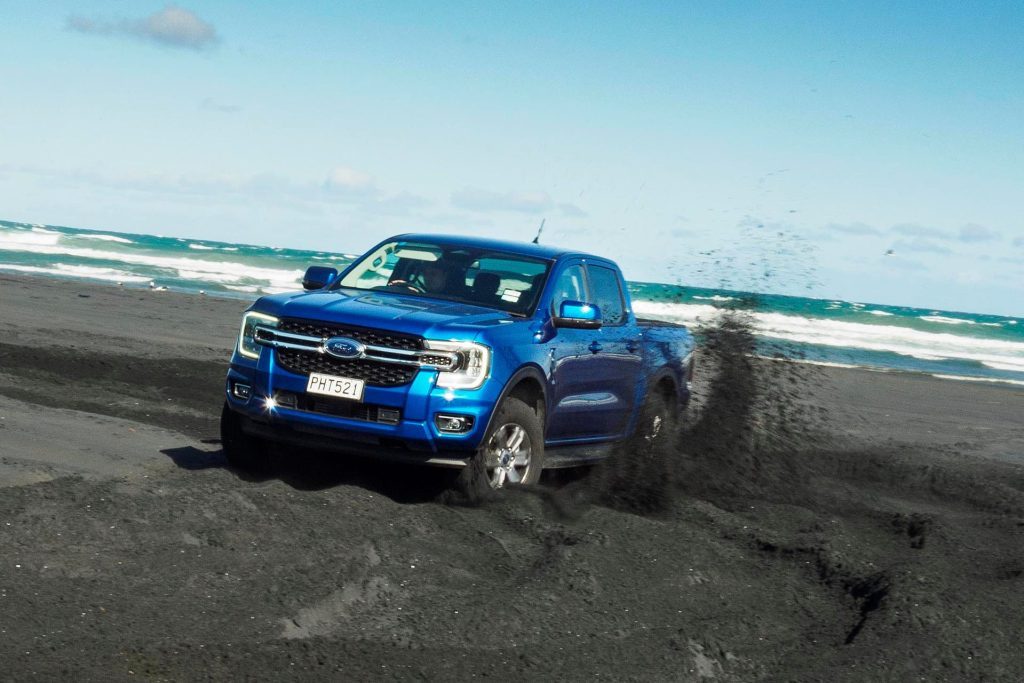
The latter can be had with either engine, the bi-turbo an option for those conscious of the CO2 output. And a 2.0 Wildtrak is a bunch cheaper too. The Wildtrak V6 is a whopping $80,490, with buyers generously donating $3910 to the Government’s clean car scheme. The bi-turbo version is $75,490, while the CC tax is just $1840. The V6 Sport is also $75,490 (but not as well specified) and cops the same $3910 fee.
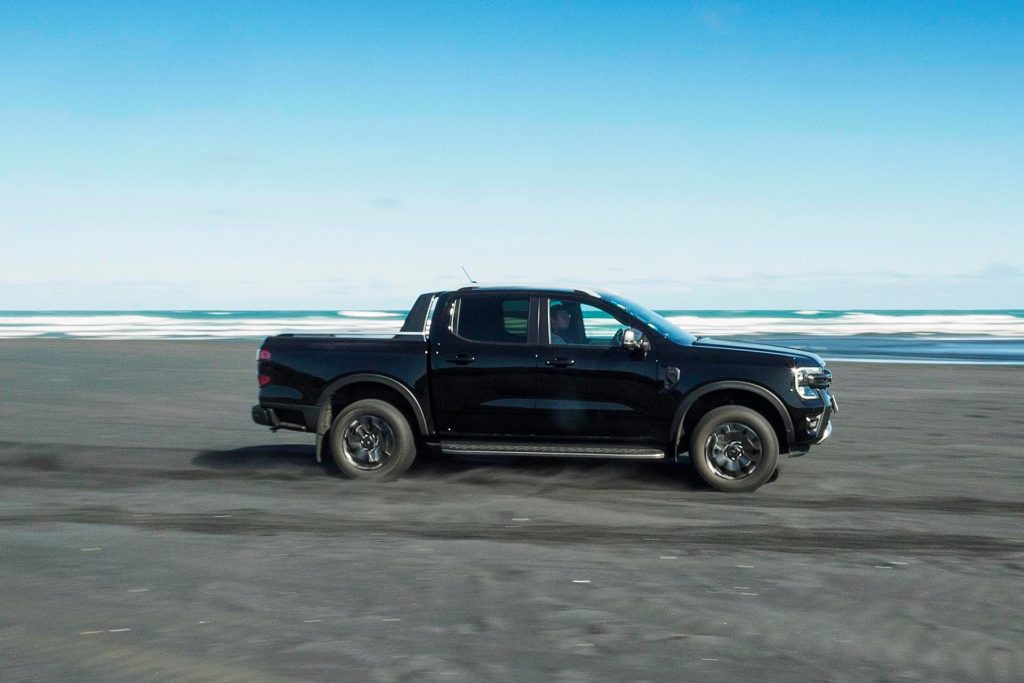
The XLT is what we’d deem a shrewd buy; it’s $66,990, only a few hundred more than what they used to charge for the old one, but this new beastie has a standard fit-out far superior to what the previous Wildtrak used to offer.
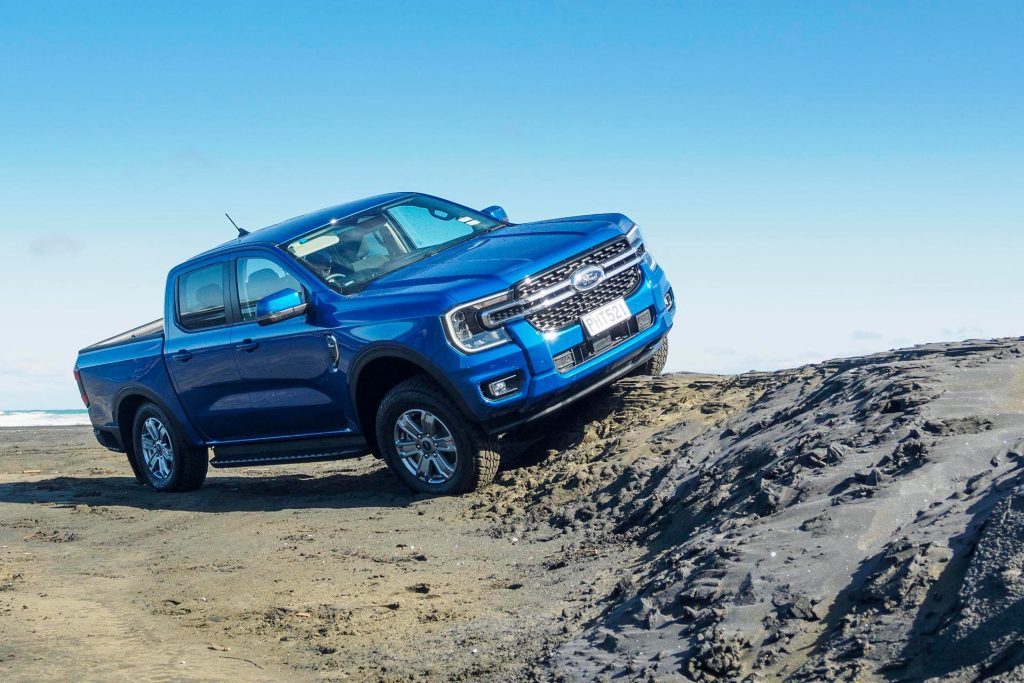
The Ranger’s interior has been spruced up, dominated by the large new centre screen. There’s still a lot of hard (wearing) plastics and the odd sharp edge but generally the cabin has more of an SUV feel to it than a utilitarian pick-up. There are even things like soft door tops in the XLT, better padding on the armrests and trick new interior door handles. These allow easier, one motion opening. The digital cluster has a new age look to it with a thin strip tacho, digital speedo, and a view of what the safety systems are doing. There’s a panel to the right which you can toggle through for yet more info.
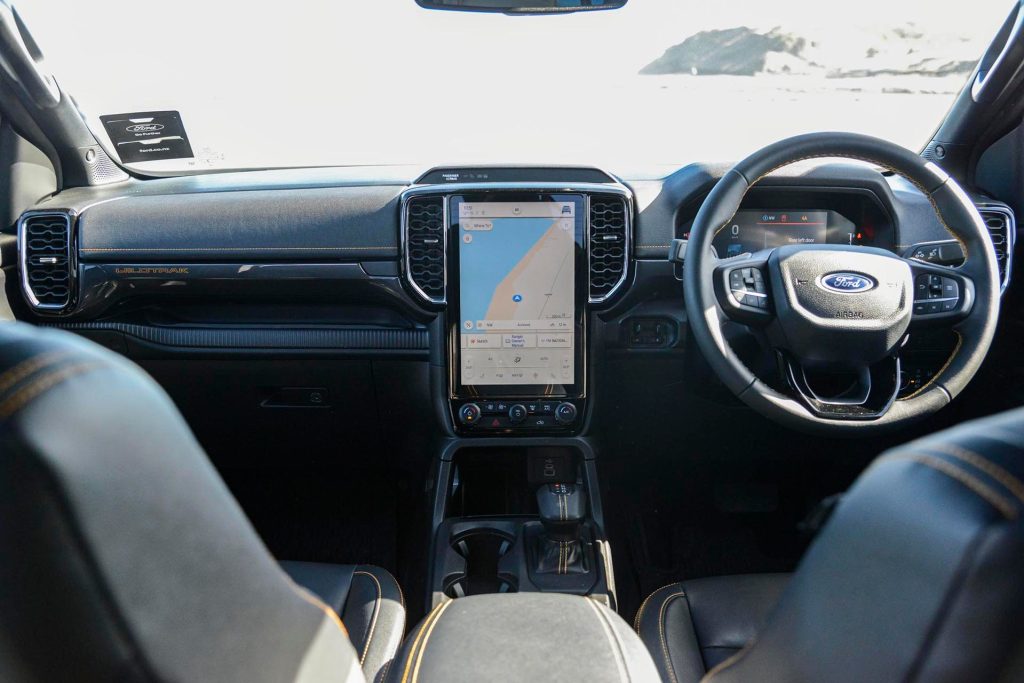
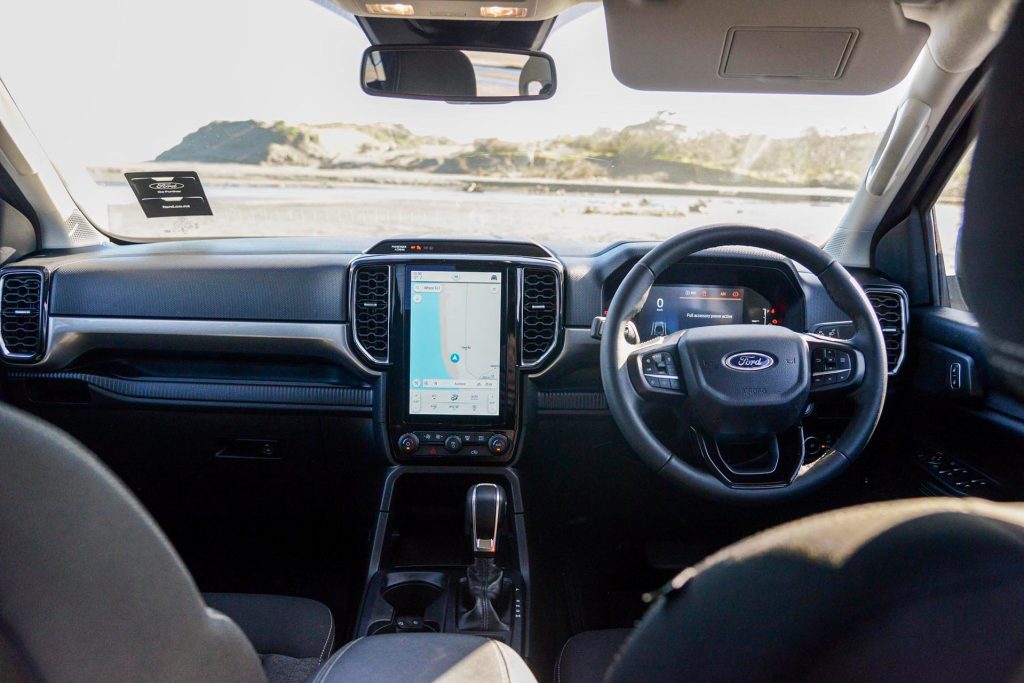
The XLT is now smartly specified with items like a smart key, LED lights, all the safety gear and a self-setting electric park brake. The top Wildtrak gets even more soft touch bits and extras like a charge pad, ambient lighting and a 360-degree camera (with specific off-road views when 4x4ing) and a self-parking mode. The seats are better too, trimmed in a hard wearing but still comfortable cloth in the XLT, and leather in the Wildtrak where they are heated too. The adjustment would give a giant lumberjack enough leg room while tilt and reach movement on the steering wheel improves the driving position further.
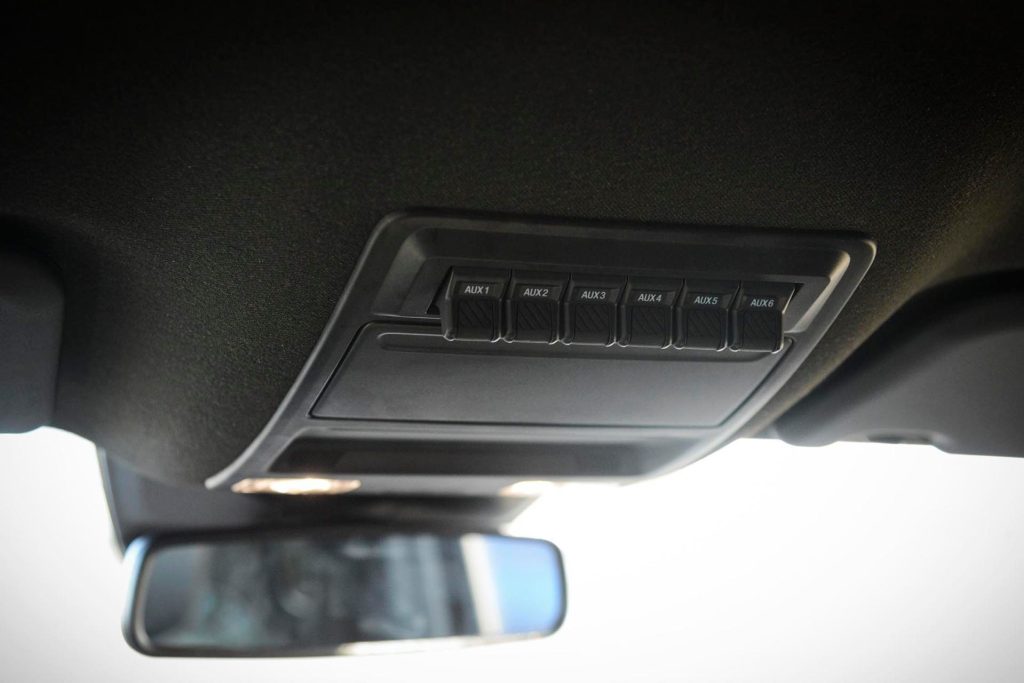
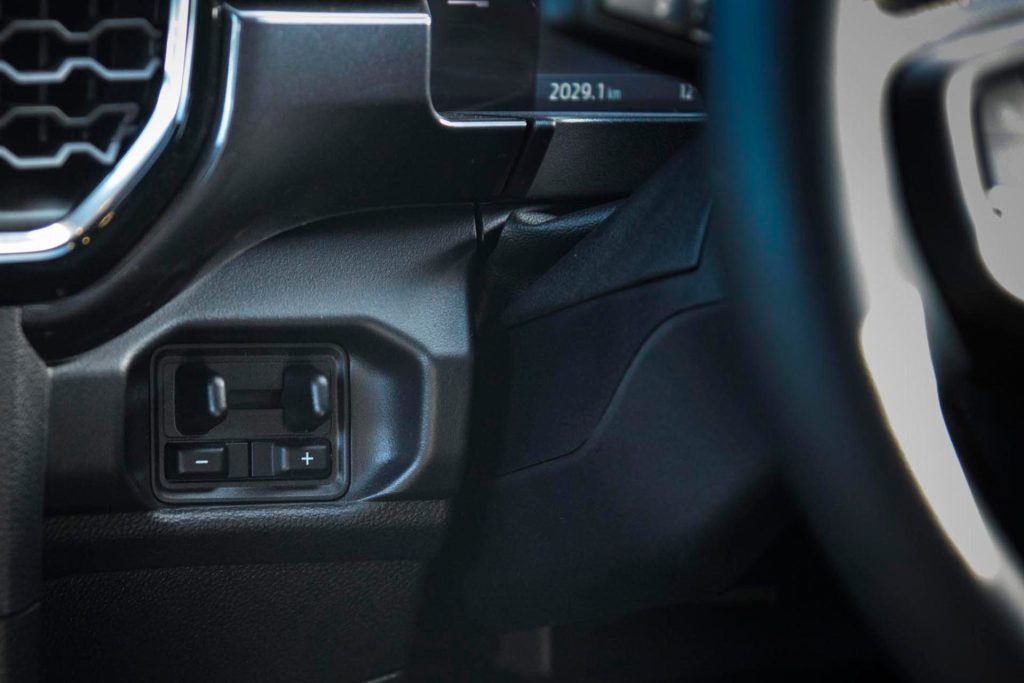
The Wildtrak gets a slighter larger screen than the XLT, to no real advantage, that we could tell anyway. We preferred the regular gear shifter in the XLT to the new eShifter in the V6, which you can too easily slip into Park rather than the intended Reverse. Also, given the old style lever is taller, it provides a better perch to steady your arm when poking away at the touchscreen. Speaking of, this is vibrant and logically ordered, if a little slow sometimes. The nav screen is easily manipulated to find your way around. Voice control can handle simple tasks, like setting the temperature and tuning the radio but nav instructions it struggles with. Older folk will like the retention of actual buttons for the ventilation, but most other buttons have been axed. That gives more space for cup holders and other storage (there’s even a slot for your takeaway fries). While the Wildtrak has additional cup holders that pop out of the dash, in the XLT all you get are some odd holes, which they say provide storage but nothing you place there will stay put for long.
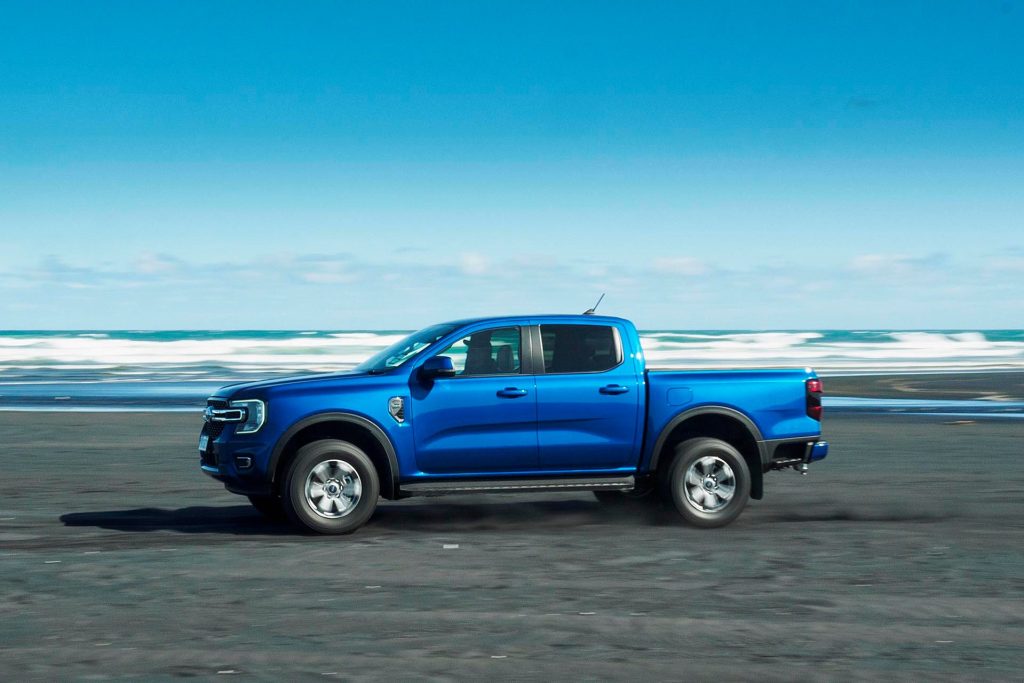
Rear accommodation remains adequate, two adults fitting comfortably, with enough leg and head room. There are Isofix points and the seat base flips up if you need to store stuff in the cab. No USB chargers however, nor the 240V plug that used to be a feature.
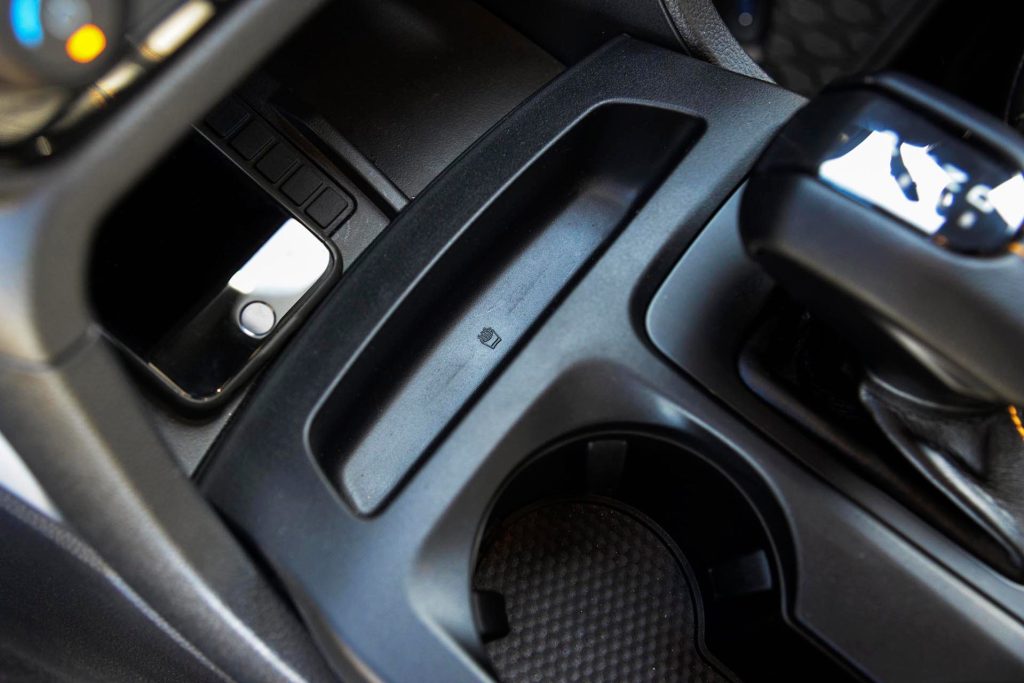
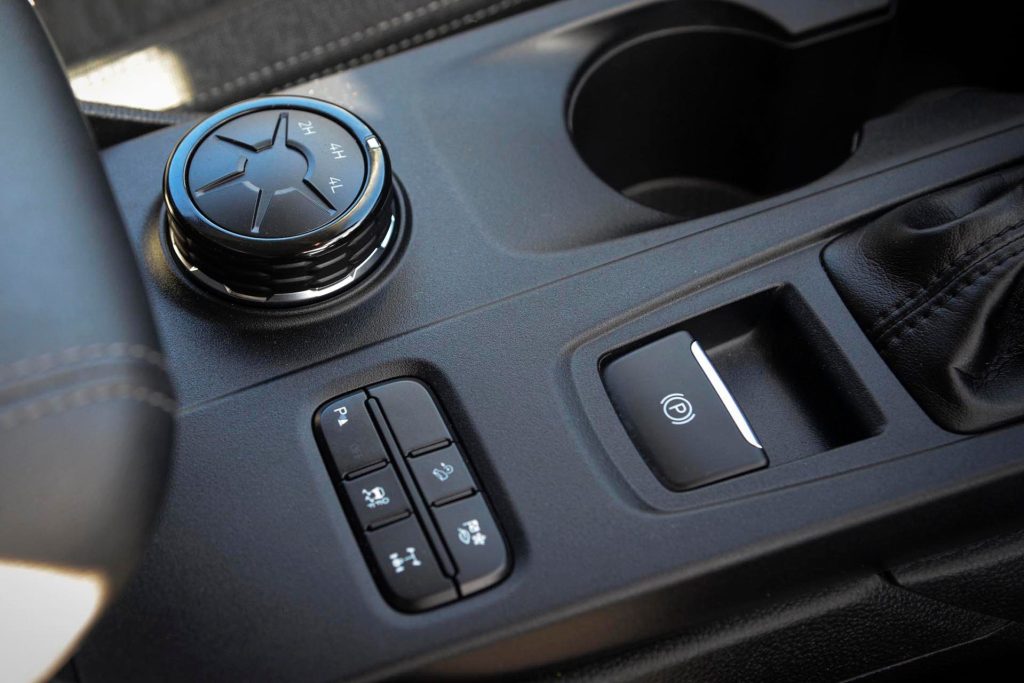
Underneath the new sheetmetal, most bits are new or fettled. There’s a fresh chassis allowing for a slight increase in wheelbase and track, while it has been engineered to be more robust in a crash. The rear axle now has outboard shockers (mounted outside the chassis rails) to help provide more control, and increase the width of the tray between the arches. The wheel tracks have increased by 50mm, the wheelbase too, giving Ranger a slightly bigger footprint, bringing with it improved stability. Ford says it also let the engineers tune the suspension to soak up large bumps more effectively. But it does a good job on smaller ones too, the low speed ride being less busy. There’s still a few bumps from the rear end, but it’s a pick-up after all.
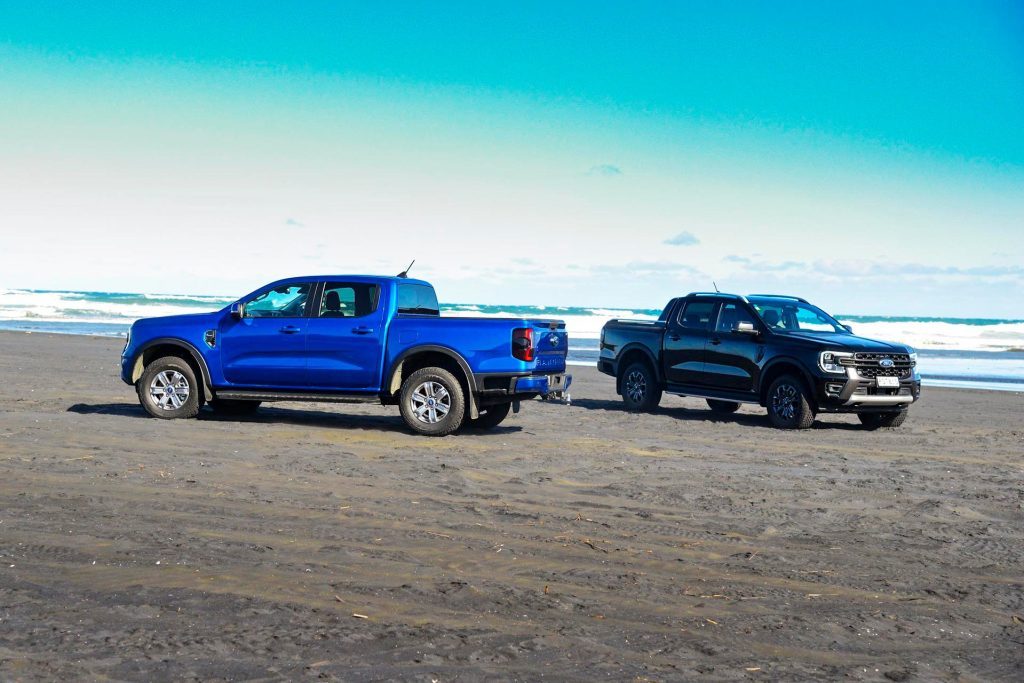
The steering is light weighted, though with 3.25 turns lock-to-lock, hardly car-like in its responses. But it makes manoeuvring a big rig with a large turning circle easier, especially if you’re eating pie while trying to reverse a trailer up a driveway. Decent side mirrors help when backing, as does a good camera (even better in the Wildtrak with its 360-degree view) and there are now front and rear park sensors.
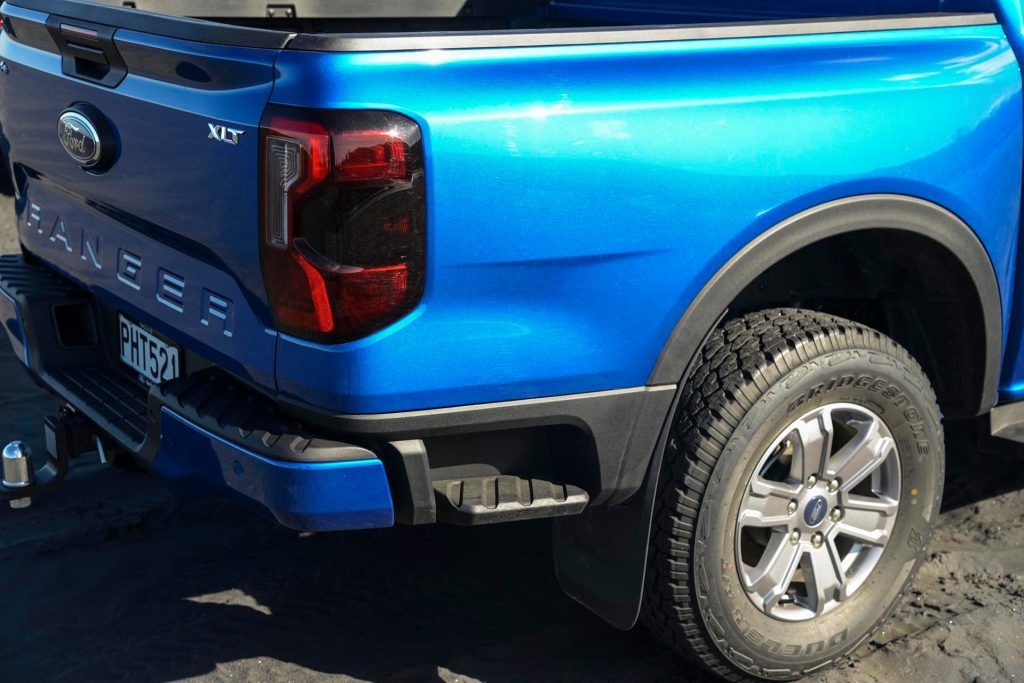
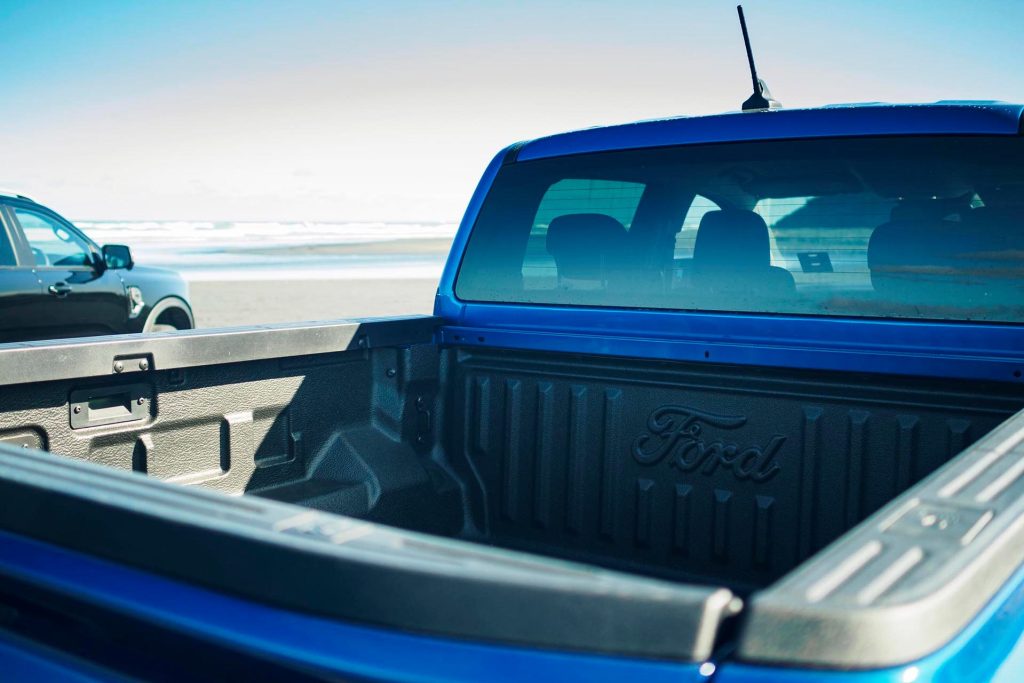
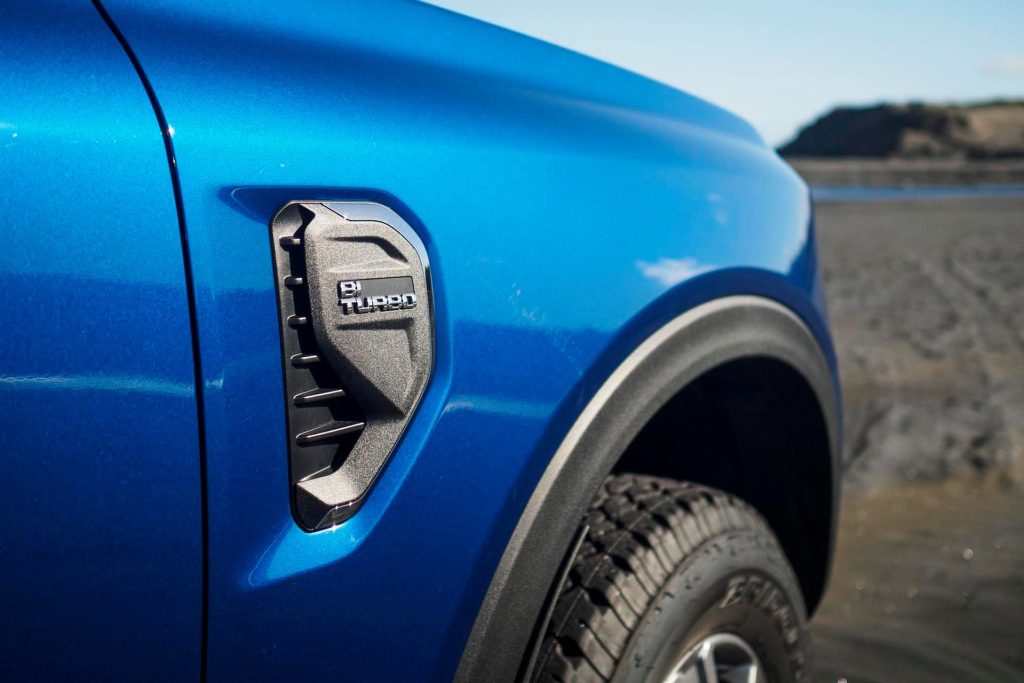
Buyers of the V6 benefit from the new active 4×4 system, with an electronically controlled centre diff dividing the torque between the axles. Along with a rear-drive setting, there is a 4 High (50/50 torque split), 4 Low and a 4 Auto, or on-demand mode. In 4A, it runs primarily with 95 per cent of the drive to the rears and then shunts more torque forwards when needed. This works well on- and off-road, delivering an abundance of traction to handle the V6 torque. It is far more refined than the traditional switchable 4×4 set-up of the bi-turbo models; there’s no binding of the driveline when turning, for instance. It should be a boon for those who tow too (all Rangers still have a 3.5 tonne rating). Helping the XLT, the new traction control system does a much better job of ensuring the rears don’t break loose when in 2H.
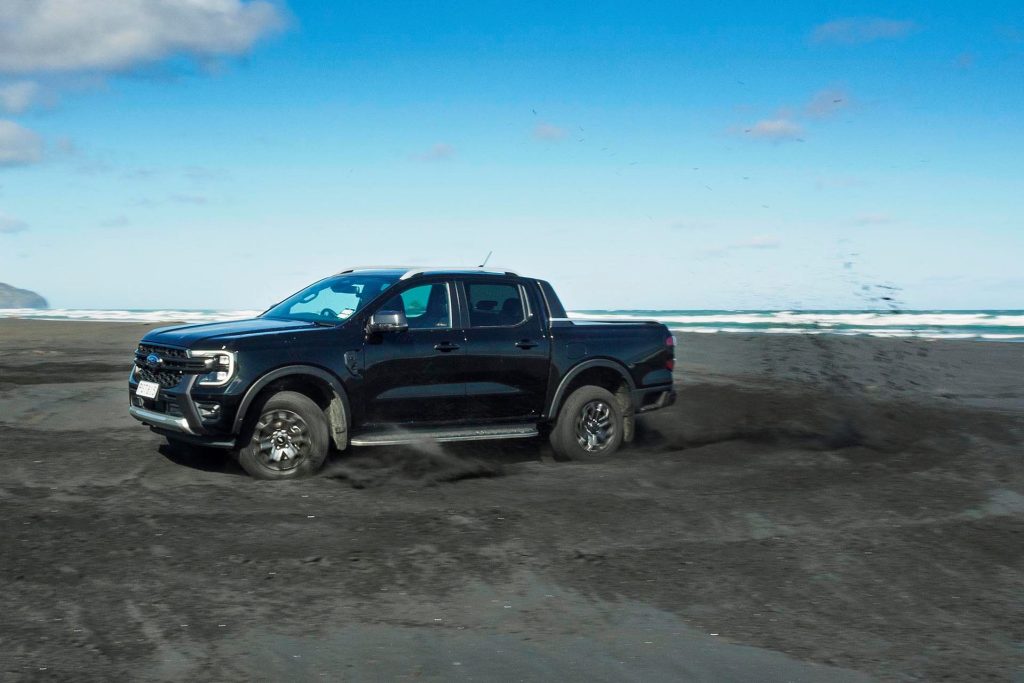
And that’s despite the fact the tyres are now slightly narrower (less rolling resistance for better economy), and taller to give an increase in ground clearance. With shorter overhangs the approach and departure angles also improve. They say there’s more wheel articulation too. We had a short excursion into the wilds; the notable aspect was its rough road ride, with less shaking and rocking involved. On gravel, the V6’s 4A setting sorts the traction for more confident progress on loose surfaces, negating the diff hop when powering on.
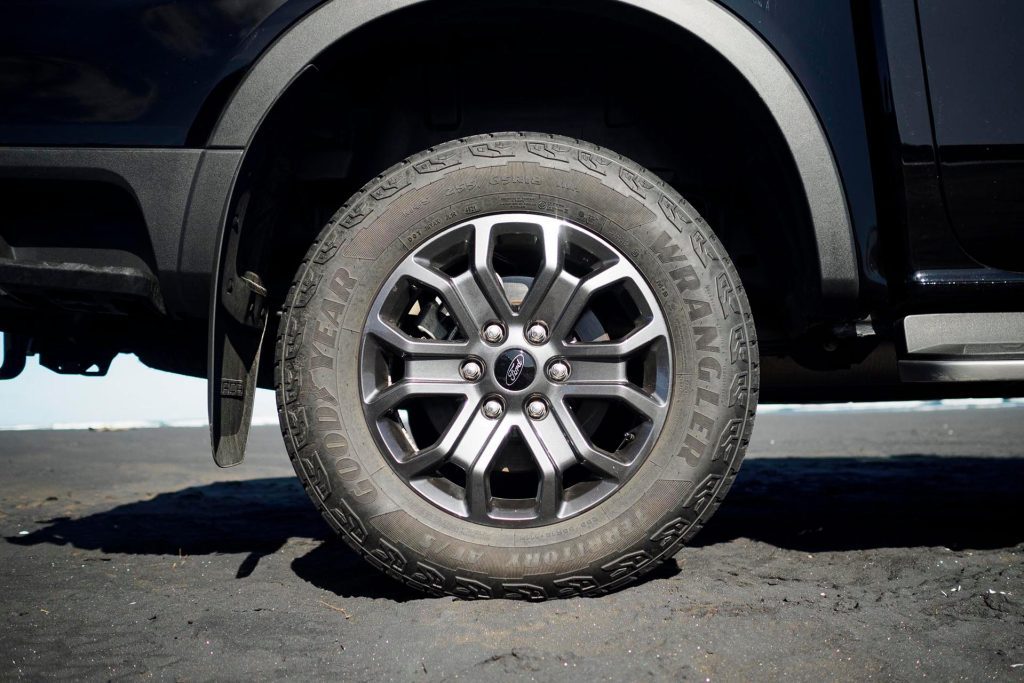
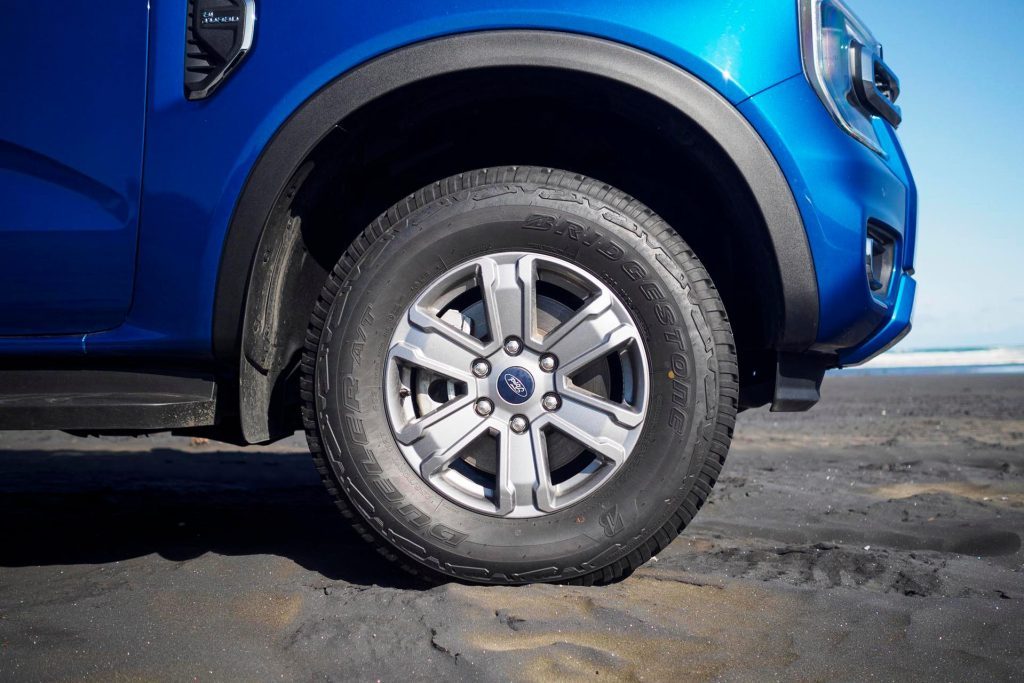
Ranger’s still a good thing to turn through the bends; it’s stable, the roll is well controlled and it rides the lumps to help reduce the bump steer. The light steering could do with a bit more resistance in the turns but it’s a decent communicator as far as truck helms are concerned. We liked the better balanced bi-turbo, as it’s less inclined to push in the tighter turns. In its 4A setting, the V6 delivers better maximum traction, and while it does have a stronger thrust off the turn, it doesn’t hose all over the bi-turbo. The four pot revs quicker so it’s not outclassed. The auto however is too concerned with constant upshifting, rather than holding gears when you’re in a series of bends. And the manual shifting function is more for towing (locking yourself in a gear, or selecting how many gears it will use) than for racing. It certainly doesn’t like any brake and throttle pedal overlap, so keep your left foot out of it. Or buy the Raptor if you can’t decide if you want a truck or a sportscar. The stoppers feel a little soft underfoot, and while there are now discs on the rear, the panic-stopping distances weren’t flash at almost 39m.
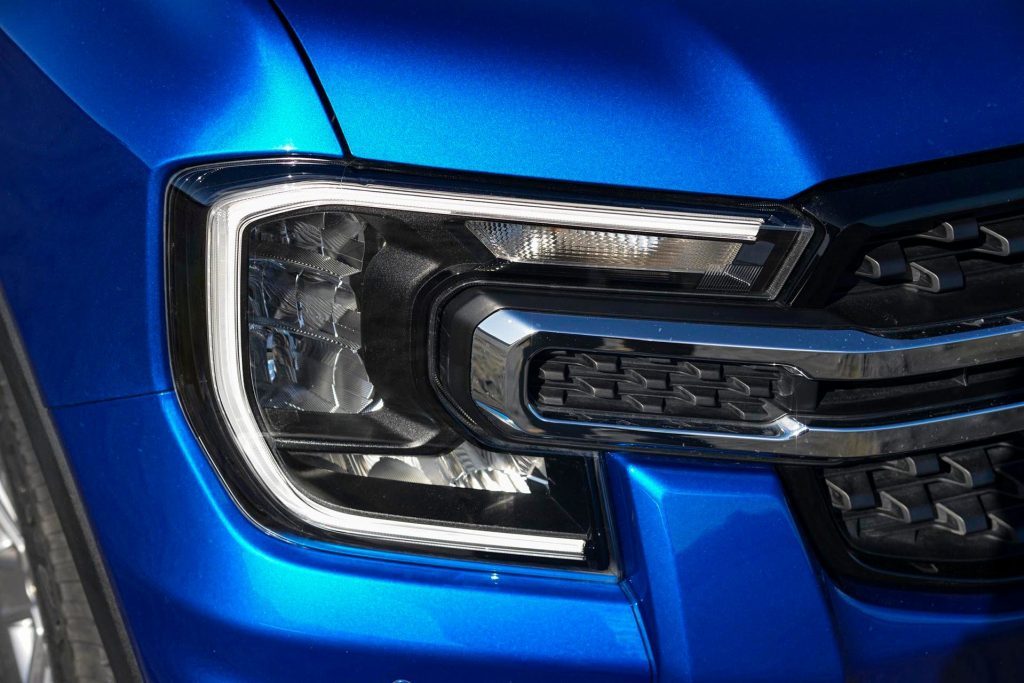
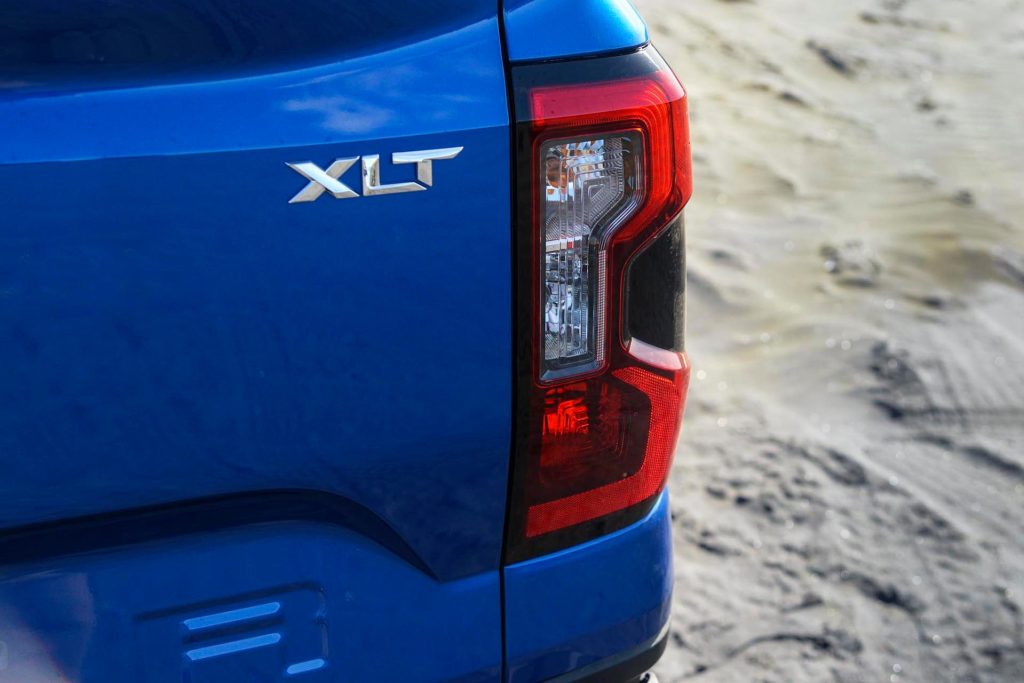
Given the prevalence of workplace safety, Ranger is now loaded with mitigating managers. There are now nine airbags (including one between driver and passenger) and with better cameras and more computing power the active safety systems improve. All models get active cruise with stop and go (works well on grid-locked motorways), lane centring (annoying on country roads but easily defeated), evasive steering assist, reverse brake assist, and blind spot monitoring. The latter can be set up for towing too. Enter the dimensions of your trailer via the touchscreen and it will reconfigure the sensors to pick up things following alongside your load. There is also a tow/haul mode for the powertrain, and the V6 models have a trailer brake control unit on the dash.
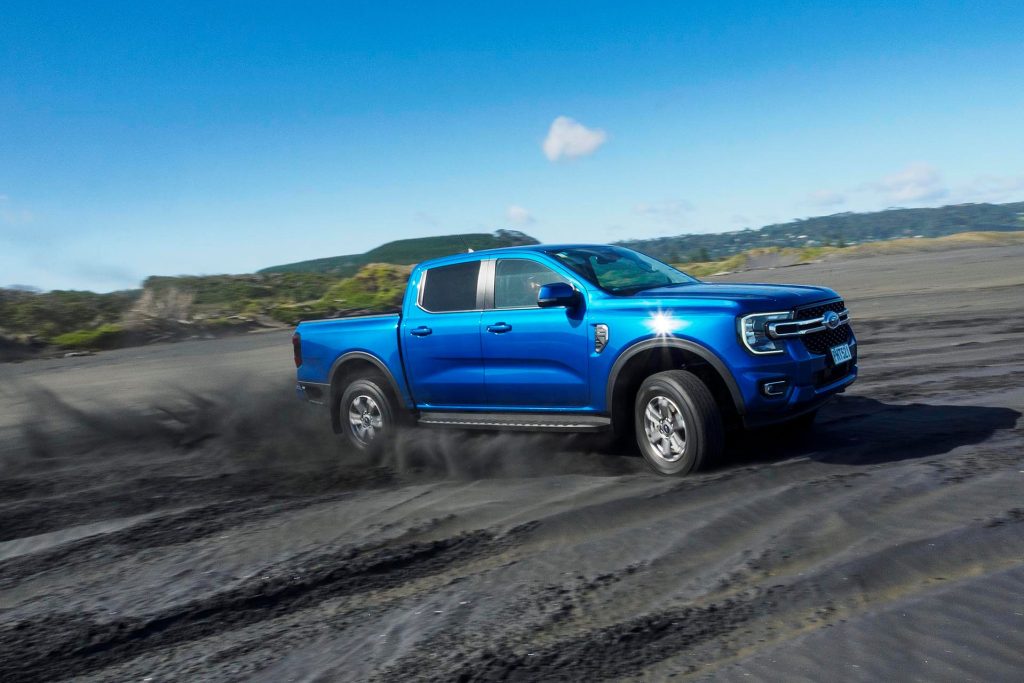
While they’ve refined the Ranger, it’s still a workhouse, the tray now wider between the arches, and deeper. The tailgate is light enough to lift with one hand thanks to the helper spring, but there’s no damper to ease the opening, so it still falls with some force. It also locks off the central remote now. All models have between 900 and 1000kg payload limits and Ranger doesn’t sag in the rear with half a cube of dirt in the back.
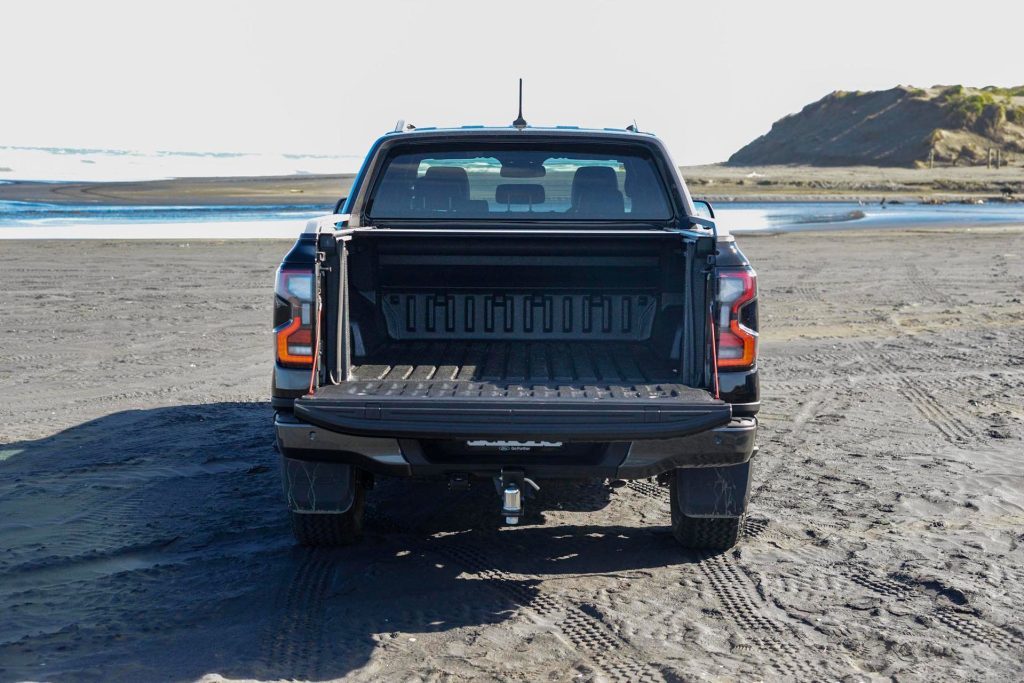
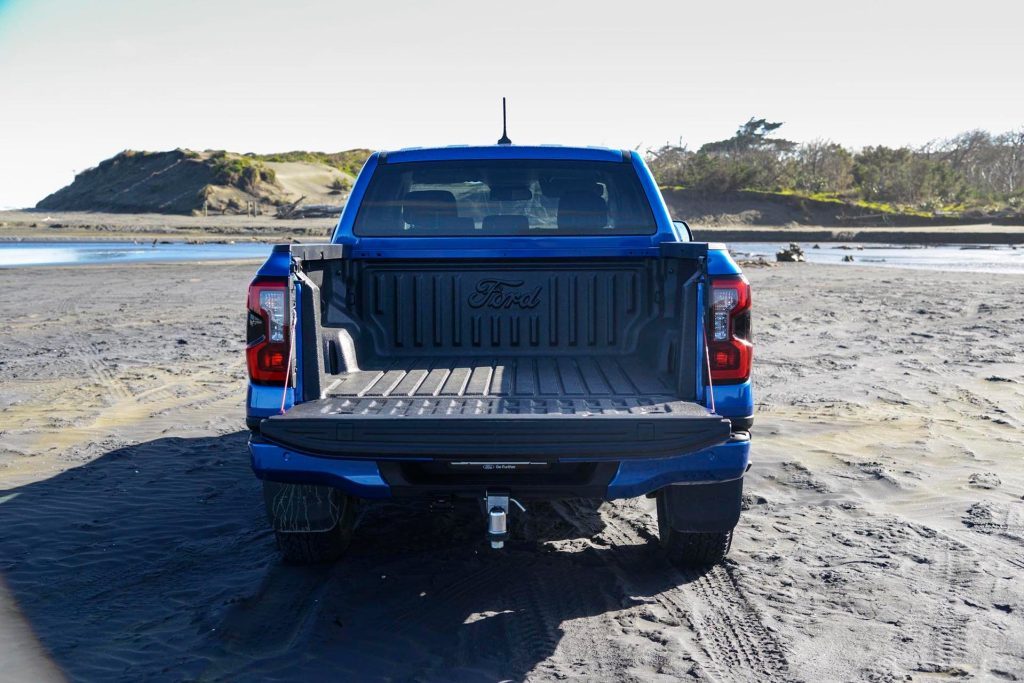
The Wildtrak has a new retractable cover, now with better sealing between the slates and around the tailgate, though it still lets the odd drip in, especially if you open it when there’s standing water on the cover. That’s done electrically now, via the key fob or a button in the cab, meaning the old leash system has gone. The best bit is the bed step – you can boost yourself up more easily without having to balance on the tyre. The tray liner is standard now too, as is the tow bar, both a nice ‘value add’.
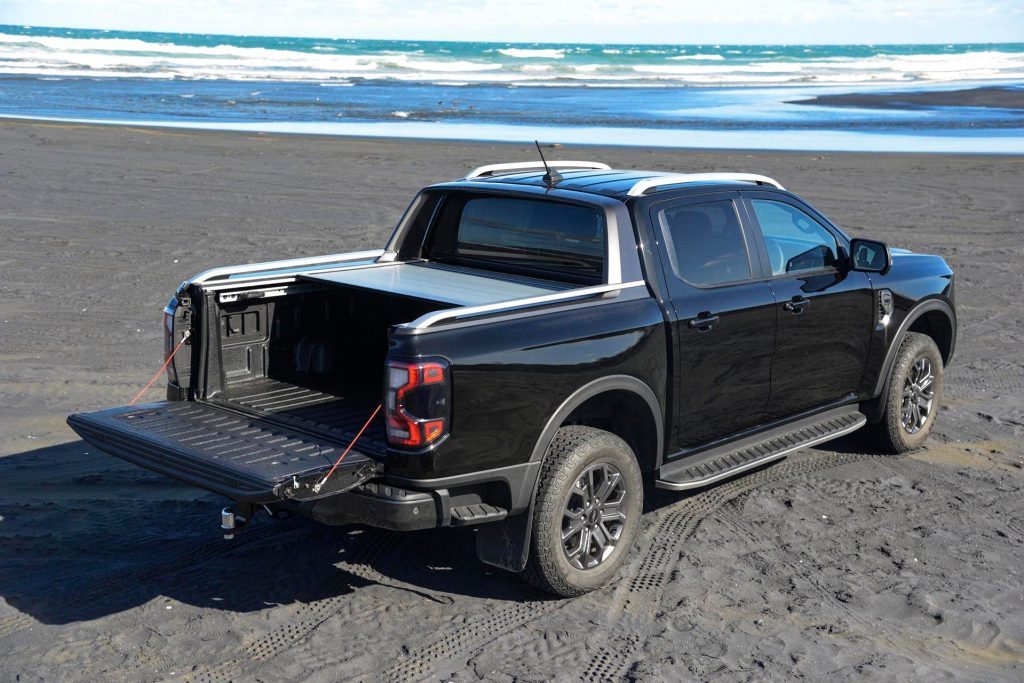
There are just four tie-down points, but the Wildtrak also has Nissan Navara-like relocatable lashing points along the side of the tray. There’s better load lighting with lights in the wellside, and the Wildtrak has brighter puddle lamps to illuminate your surroundings at night.
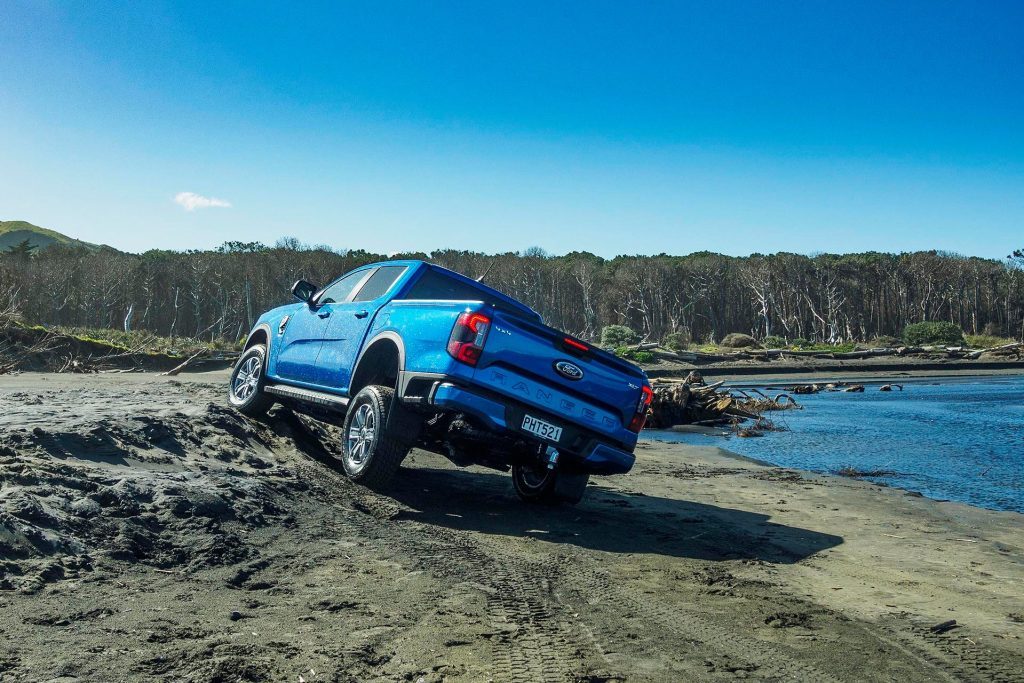
Servicing requirements are handled by the ‘Intelligent Oil Life Monitor’; it’ll tell you when it needs attention. This could be as frequent as every 8000km for those doing a lot of stop/start city driving or up to 15,000km/12 months for those doing more highway miles. These new engines are said to meet the latest emissions standards but for NZ that only means Euro5. A cleaner Ranger won’t come until 2024 for NZ. And that will likely mean a further increase in price as Ford NZ grapples with the incoming Clean Car Standard. This may see a detuning of engines to reduce emissions and, in a worst-case scenario, Ford NZ might have to drop the V6. There might be a hybrid version by then, who knows as they certainly aren’t telling us. But if you think the prices are steep now, they’ll become even more expensive in the coming years. Get in quick then, as the marketers would say.
| Model | Ford Ranger Wildtrak V6 |
| Price | $80,490 |
| Clean Car Discount | Fee +$3910 |
| Engine | 2993cc, V6, T, DI |
| Power/Torque | 184kW/600Nm |
| Drivetrain | 10-speed auto, on-demand AWD |
| Fuel Use | 9.3L/100km |
| C02 Output | 254g/km |
| 0-100km/h | 8.31sec |
| 80-120km/h | 6.08sec (167m) |
| 100-0km/h | 38.91m |
| Stability systems | ABS, ESP, |
| Safety | AEB, ACC, BSM, LDW, RCTA, ALK, AHB |
| Fuel Capacity | 80L |
| Tow rating | 750kg (3500kg braked) |
| Service intervals | Variable |
| Warranty | 5 years/150,000km |
| ANCAP rating | Not yet rated |
| Weight | 2399kg (claimed) |
| Model | Ford Ranger XLT 4×4 |
| Price | $66,990 |
| Clean Car Discount | Fee +$1840 |
| Engine | 1996cc, IL4, T, DI |
| Power/Torque | 154kW/500Nm |
| Drivetrain | 10-speed auto, switchable AWD |
| Fuel Use | 8.1L/100km |
| C02 Output | 218g/km |
| 0-100km/h | 9.20sec |
| 80-120km/h | 7.01sec (199m) |
| 100-0km/h | 38.50m |
| Stability systems | ABS, ESP, |
| Safety | AEB, ACC, BSM, LDW, RCTA, ALK, AHB |
| Fuel Capacity | 80L |
| Tow rating | 750kg (3500kg braked) |
| Service intervals | Variable |
| Warranty | 5 years/150,000km |
| ANCAP rating | Not yet rated |
| Weight | 2271kg (claimed) |


